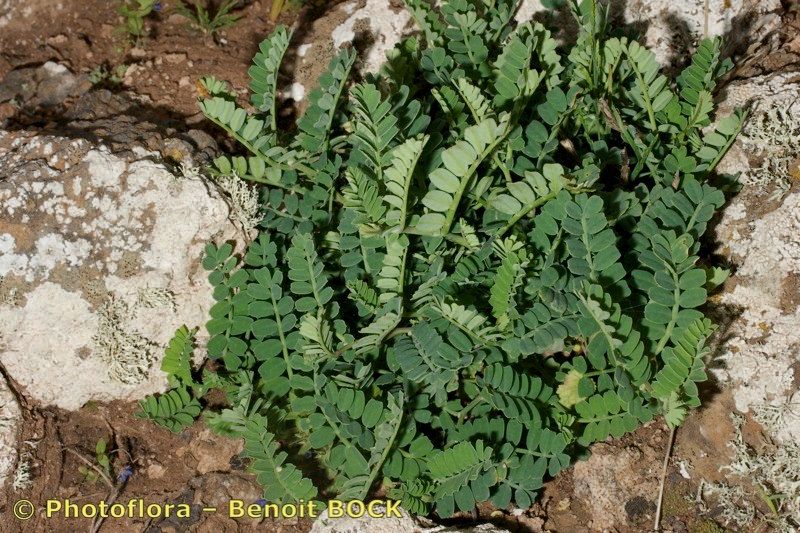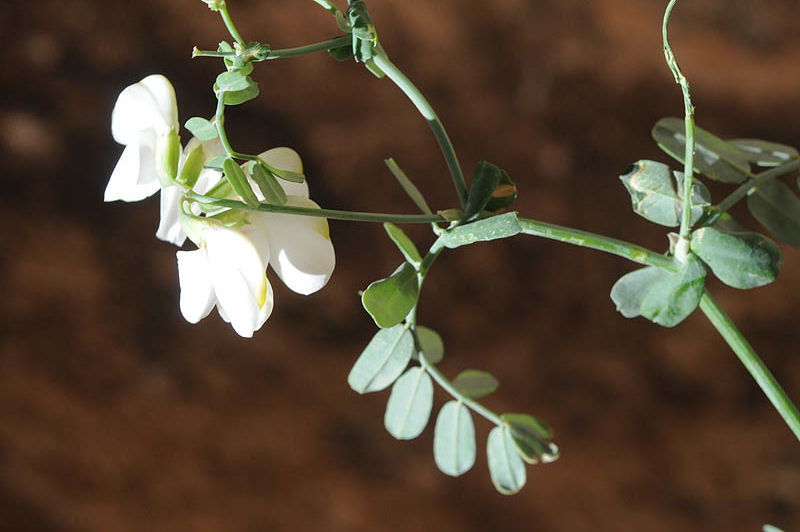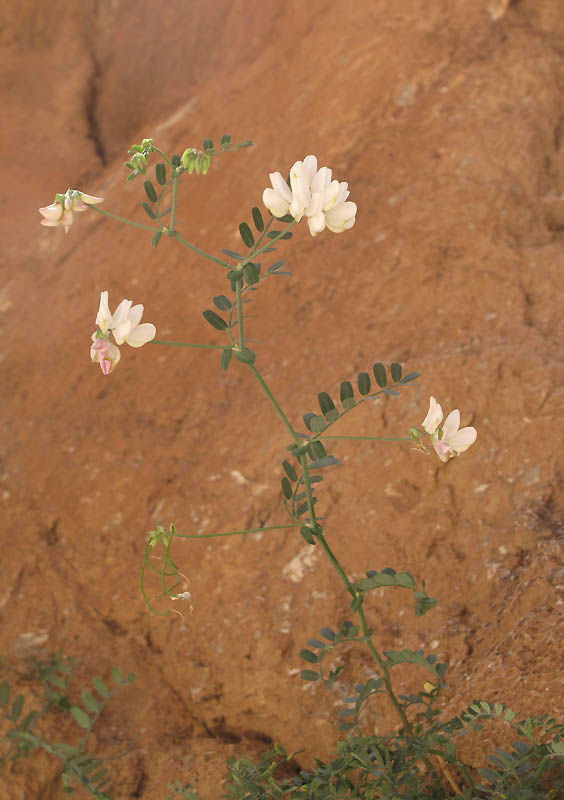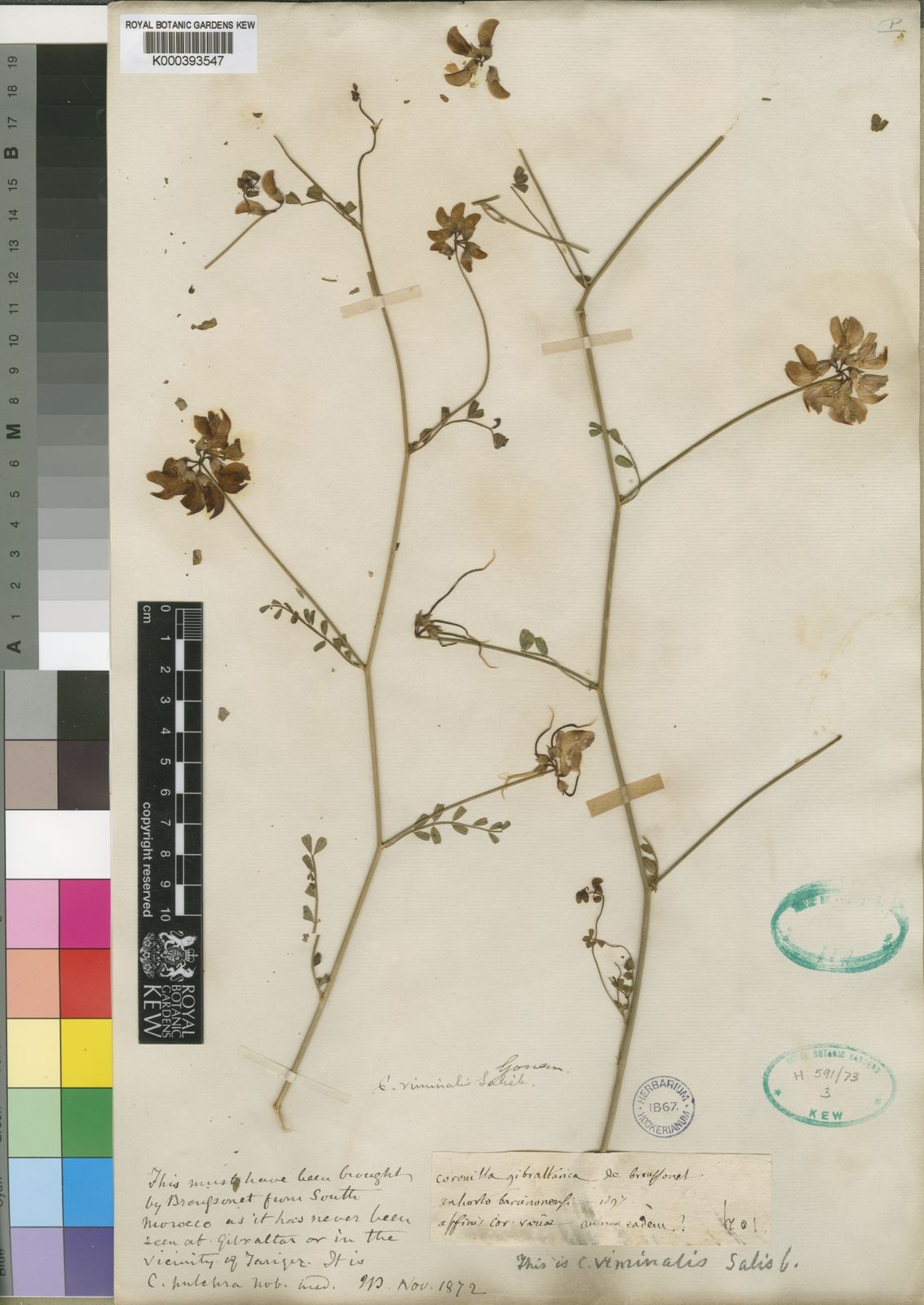Sickle Bush
coronilla viminalis
Also known as: ["Sickle Bush","Australian Senna"]
Overview
A deciduous shrub native to Australia, known for its pinnate leaves and yellow flowers in spring.
Benefits & Perks
["wildlife attractant (bees, butterflies, birds)","drought tolerant"]
Botanical Classification
| Phylum: | Magnoliophyta |
| Class: | Magnoliopsida |
| Order: | Fabales |
| Family: | Fabaceae |
| Genus: | Coronilla |
| Botanical Name: | Coronilla viminalis |
Plant Characteristics
Basic Information
- Category: Shrubs
- Suitable Location: outdoor garden bed or container in a sunny position
- Suitable For:
- Is Weed: No
- Allergenicity: low
Environmental Needs
- Climate: {"temperatureRange":"–15–30°C"}
- Hardiness: {"zones":"4–8"}
- Misting: rarely required, only if ambient humidity is very low
- Drainage: Fast-draining; avoid waterlogged conditions.
- Soil Type: Well-draining, loamy soil with added organic matter; tolerates poor soils.
Maintenance Level
- Maintenance Level: moderate
- Toughness Level: moderate
- Pruning Frequency: Annually in late winter or early spring before new growth begins.
- Pruning Intensity: Moderate; remove up to one-third of the oldest stems to rejuvenate the plant.
Care Details
Ideal Sunlight Coverage:
Full sun to partial shade; 6–8 hours of direct sunlight per day; adjust for intense summer sun.
Sunlight Tolerance Tips:
Acclimate plants to full sun gradually; protect from harsh midday sun; place in partial shade during peak summer.
Care Requirements
Care Difficulty
moderatemoderate
Sunlight
full sun to partial shade
Rotate plant for even light exposure; use shade cloth in intense sun; avoid sudden light changes.
Watering
every 7–10 days during active growth, less frequently in winter
Water thoroughly but infrequently; ensure soil dries between waterings; avoid overwatering.
Soil
well-drained, moderately fertile soil
pH: Slightly acidic to neutral (pH 6.0–7.0).
Ensure soil is not compacted; avoid heavy clay soils; amend with organic matter for fertility.
Temperature
Hardy in USDA zones 6–9; tolerates temperatures between -20°C to 30°C; prefers cool winters and warm summers.
Protect from frost; avoid sudden temperature swings; ensure good air circulation.
Fertilizing
every 4–6 weeks during spring and summer
Fertilize lightly; avoid over-fertilization; water before applying fertilizer.
Propagation
Methods
Stem cuttings or seed; stem cuttings are more reliable for home growers.
Step-by-Step Propagation Guide
- Take a 4–6 inch cutting.
- Remove lower leaves.
- Dip in rooting hormone.
- Plant in medium.
- Keep moist and warm.
Best Time: Late spring to early summer when the plant is actively growing.
Environment
Warm, humid environment with indirect light; maintain temperatures around 20–25°C.
Medium
Well-draining potting mix with perlite or sand; can also use a mix of peat and sand.
Hormone
Rooting hormone is recommended to improve success rates.
Timeline
Roots may develop in 4–6 weeks; new growth may appear in 2–3 months.
Tools Needed
Pruning shears, rooting hormone, small pots, well-draining medium.
Quick Tips
Use healthy, non-flowering stems; keep cuttings out of direct sun; maintain consistent moisture.
Pruning & Repotting
Pruning Guide
Method
Use clean, sharp tools; cut just above a bud or lateral branch; avoid leaving stubs.
Pruning Plan
Prune to maintain shape, encourage bushier growth, and remove dead or diseased wood.
Tools
Pruning shears, loppers, gloves, disinfectant.
Checklist
Disinfect tools; prune dead/damaged wood; shape the plant; clean up debris.
Repotting Guide
Best Season
Early spring before active growth starts.
Pot Size
Increase pot size by 2–3 inches in diameter; ensure good drainage.
Method
Remove plant gently; trim roots if necessary; place in a new pot with fresh soil; water lightly.
Suggestions
Repot every 2–3 years or when roots fill the pot; beneficial for container-grown plants.
Checklist
Prepare new pot; trim roots if needed; use fresh soil; water after repotting.
Advanced Care Tips
Watering Mastery
Watering Checklist
Check soil moisture; water deeply; ensure drainage; adjust for season.
How to Apply Water Properly
Water at the base of the plant, ensuring moisture reaches the root zone; allow excess water to drain away; water in the morning to reduce evaporation.
Watering Schedule Tips
Water deeply once the top inch of soil is dry; reduce frequency in winter to prevent root rot.
Soil Improvement
Add compost or well-rotted manure; incorporate perlite or sand for drainage; ensure good aeration.
Temperature Stress Management
Signs of Temperature Issues
Leaf drop, yellowing, stunted growth, or bud drop; wilting in extreme heat or cold.
Cold Stress
Leaves may turn brown or black; growth slows or halts; may die back in severe cold.
Solution: Mulch heavily in winter; protect from frost with row covers; move potted plants indoors if temperatures drop below -10°C.
Hot Stress
Wilting, leaf scorch, or reduced flowering; growth may slow in excessive heat.
Solution: Provide shade during peak heat; increase watering; use mulch to retain soil moisture.
Fertilizing Guide
Fertilizing Checklist
Check fertilizer type; follow dilution instructions; apply during active growth.
Fertilizing Method
Use a balanced, slow-release fertilizer in early spring; avoid high-nitrogen formulas; reduce or stop fertilizing in late autumn and winter.
Common Problems & Solutions
Toxicity Warning
Cats
Slightly ToxicCats may experience mild to moderate toxicity if they ingest the seeds or young leaves of Coronilla viminalis. The plant can cause gastrointestinal upset and other systemic effects, though severe reactions are rare.
⚠️ Symptoms:
🌿 Toxic Parts:
⚡ Toxic If:
if eaten
Dogs
Slightly ToxicIn dogs, ingestion of Coronilla viminalis seeds and young leaves can lead to mild gastrointestinal upset and other systemic effects. While not typically life-threatening, ingestion should be avoided to prevent discomfort and potential health issues.
⚠️ Symptoms:
🌿 Toxic Parts:
⚡ Toxic If:
if eaten
Humans
Slightly ToxicCoronilla viminalis contains toxic compounds, primarily in its seeds and young leaves, which can cause mild to moderate gastrointestinal distress and other systemic effects upon ingestion. The plant's toxicity is not severe but can lead to discomfort and adverse reactions in humans.
⚠️ Symptoms:
🌿 Toxic Parts:
⚡ Toxic If:
if eaten
Frequently Asked Questions
Q: Is Coronilla viminalis toxic to pets?
A: There is insufficient data on its toxicity to pets.
Q: How often should Coronilla viminalis be watered?
A: Water moderately, allowing the soil to dry slightly between waterings.
Q: Does Coronilla viminalis attract wildlife?
A: Yes, it attracts bees, butterflies, and birds due to its flowers.
Quick Reference
| Family: | Fabaceae |
| Care: | moderate |
| Light: | full sun to partial shade |
| Water: | every 7–10 days during activ |
Get Expert Care Tips
Download the Plantious app for personalized care reminders and plant identification!
Google Play App Store








